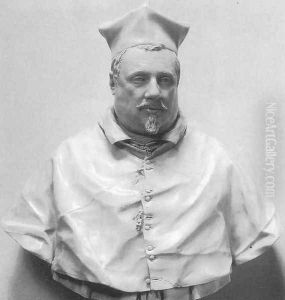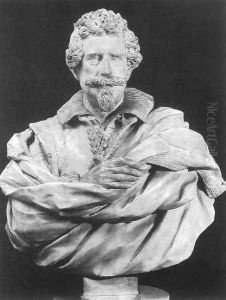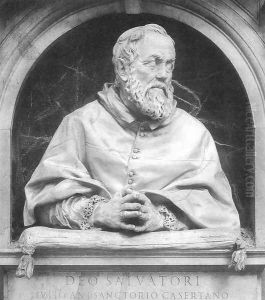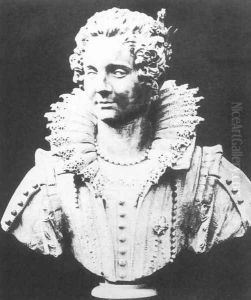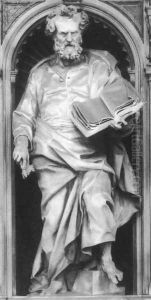Giuliano Finelli Paintings
Giuliano Finelli was an Italian sculptor, born in 1601 in Carrara, a city renowned for its marble quarries, which undoubtedly influenced his career path. Finelli was a prominent figure in the Baroque period, a time characterized by dramatic expression and elaborate detail in the arts. His work is noted for its intricate detail and the lifelike quality of his sculptures, marking him as one of the early masters of Baroque sculpture.
Finelli's journey into the world of art began under the apprenticeship of Pietro Bernini, the father of the famous Gian Lorenzo Bernini. This connection played a crucial role in his early development as an artist. However, despite the initial influence of the Bernini family, Finelli eventually moved away to establish his own style and identity. His departure from Bernini's shadow was partly due to artistic differences and a desire for independence, which led him to Naples in 1629, where he would spend the majority of his career.
In Naples, Finelli's work flourished. He became known for his exceptional skill in carving delicate details, such as the intricate lace of a garment or the soft texture of hair, which made his marble sculptures seem almost alive. One of his most celebrated works is the bust of Maria Cerri Capranica (1639), which showcases his ability to infuse marble with the softness and complexity of human features.
Finelli's contribution to the Baroque movement was significant, yet he has not received the same level of recognition as some of his contemporaries. Despite this, his work remains a testament to the technical skill and artistic vision of Baroque sculptors. His sculptures are housed in various collections and churches in Italy, standing as enduring symbols of Baroque art's fascination with dynamic forms and emotional depth.
Giuliano Finelli died in 1653 in Naples. His legacy, though overshadowed by more prominent figures of his time, continues to be appreciated by art historians and enthusiasts for its unique blend of realism and elegance. Through his sculptures, Finelli captured the Baroque spirit of his age, contributing to the richness and diversity of 17th-century Italian art.
